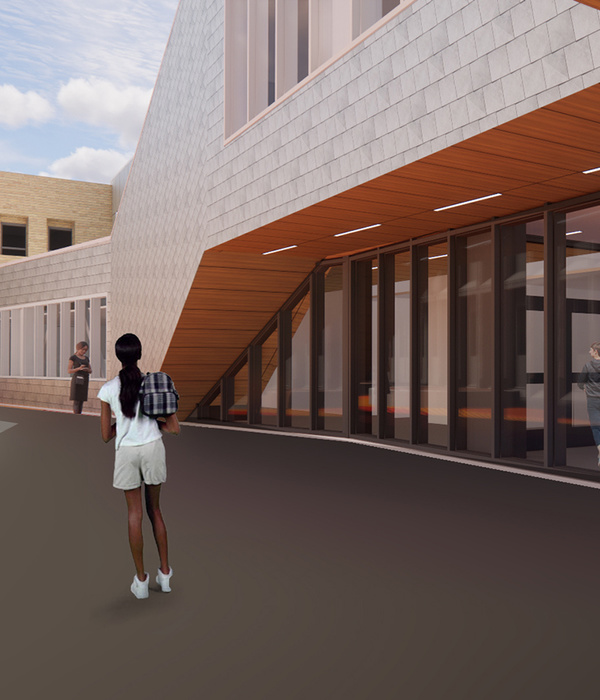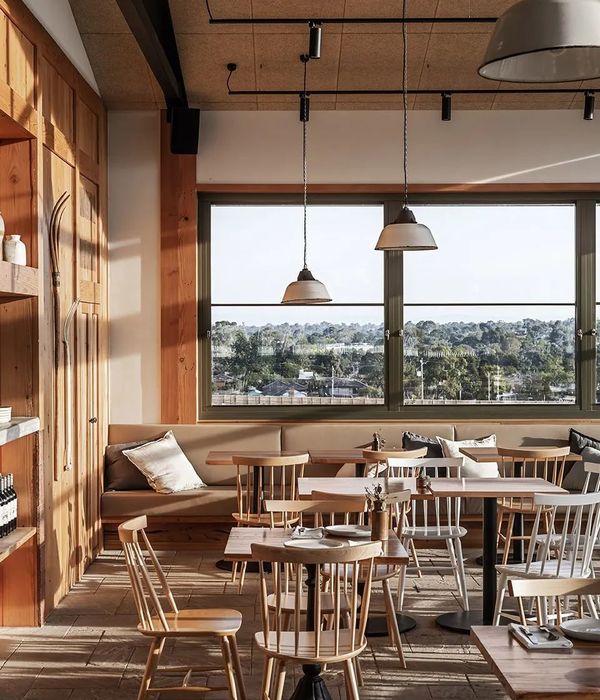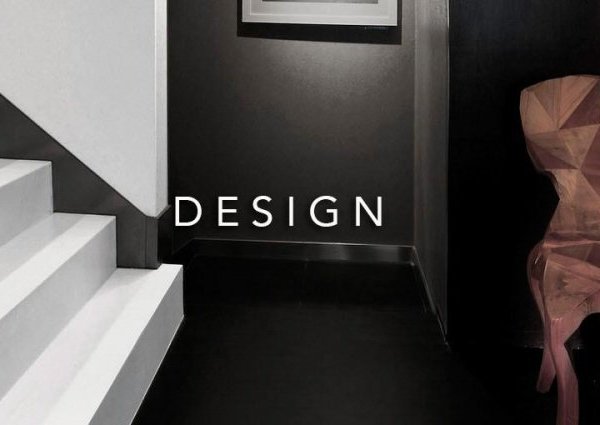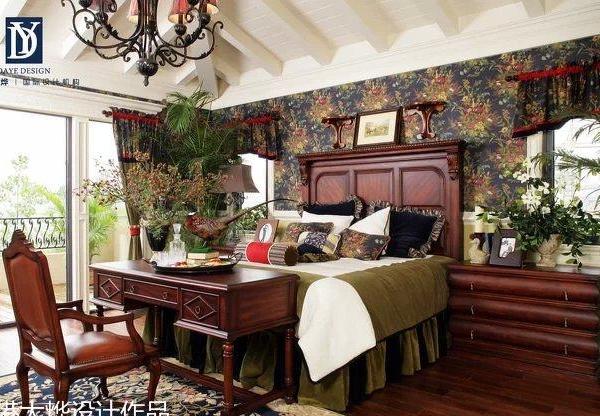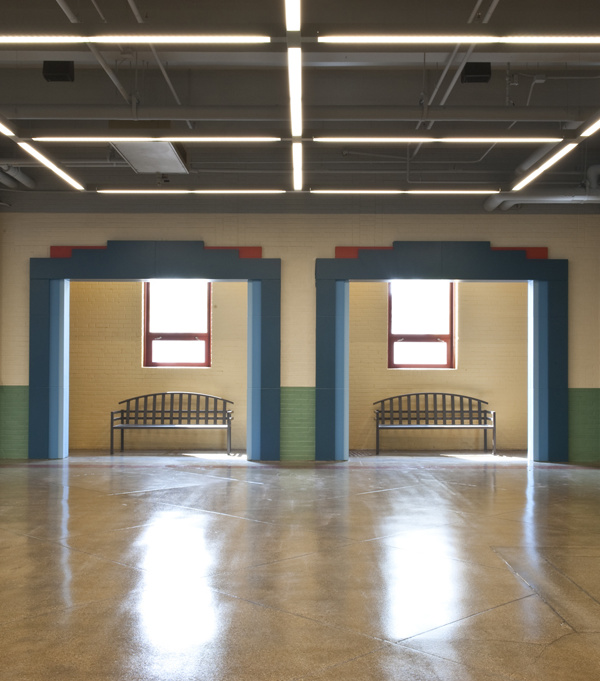项目概况 | Notes
本项目位于迈阿密设计区(Miami Design District)的中心位置,是一个两层的零售和餐饮空间的立面设计。客户要求设计必须能够展现迈阿密的热带城市环境特色,打造一种设计、艺术和建筑的创造性体验。
Once the site of furniture manufacturing and low-rise warehouses, the Miami Design District is being actively transformed into a vibrant destination for both residents and visitors. The clients, entrepreneur Craig Robins and investors L Real Estate have asked us to imagine a set of shops and restaurants in the heart of the district. Over the past ten years, they have called on architects and urban planners to codify a response to Miami’s urban tropical context in built form, via a pedestrian-centric masterplan dedicated to the unity of creative experiences in design, art, and architecture.
As our architectural practice is based in Paris, founded on a hybrid American-European imagination, it is not difficult for us to be charmed by the exotic imagery of Miami. The city’s redevelopment following the 1926 hurricane completely refashioned the Art-Deco style once in vogue in Paris. In South Beach, elegant stucco buildings with pastel colors evoke the Roaring Twenties, simultaneously suggesting Scott Fitzgerald’s The Great Gatsby and New York’s Al Capone on a tropical beach vacation. Lifeguard towers, chromatic and kaleidoscopic, dot the sands of Miami beach, whimsically resembling the red follies of Parc de la Villette.
▼项目外观,exterior view
设计目标 | Methodology
本项目从迈阿密的景观、城市元素以及炎热潮湿的环境入手,确定了两个设计目标:一是挖掘材料极限,通过凹进突出的表皮创造一种个性化的触觉体验;二是在建筑立面与室内外环境、历史、文化以及政治等因素之间建立对话,因为任何图案和母题都不可避免地有其自身的含义。
▼外立面采用菱形瓷砖作为基本单元,通过重复的排列,创造持续变化的立面系统,facade uses the diamond as the basic unit, offering constantly changing perceptions after being repeatedly arranged
Our methods of design always include a reflection on context—the project’s immediate cultural, social and environmental conditions. The large, imprecise cloud of imagery, texts, and references which inform our initial investigations begin to form our subjective and collective definition of this context. Through iterative processes, our responses to context are filtered through the lenses of use and materials in the pursuit of a hybrid response which is always specific.
Revisiting our narrative of Miami’s architecture—the blocked geometries of mission-revival architecture, the lifeguard towers— color and geometry emerge. The colors are paired with the landscape, composed of water, the beach, its plants, its minerals, and all are born of Miami’s climate, hot and humid. These essentialities of this context will begin to steer the design process as we define our goals.
In our work, we often seek to develop both internal and external operations, anticipating changes of use, favoring appropriation by the users, and allowing each to inhabit the architecture in their own way. In Miami, we are working essentially on the material limit. Through a development of the surface and depth of the material cladding itself, through its deepened reveals and openings, we attempt to offer a personal experience engaging the user’s sense of touch, via a sensuality of ever- changing materiality. The material, its physical qualities, and the way we perceive those qualities becomes the focus of our first explorations.
Architecture provides a sense of meaning—a narrative, which can be read either implicitly or explicitly, but must which always be present. The specific articulation of that narrative has evolved with successive schools of thought, which is where one can observe the particularities of various styles. Historically, the façade has always been the instrument with which a work of architecture communicates meaning—communicates to its inhabitants, both interior and exterior; to its place in time including its present, past, and future; and to its culture, its history, and its politics. Our articulation of that communication becomes the second focus of our explorations, as we understand any motif or ornamentation will be inescapably saturated with meaning.
▼墙面采用菱形瓷砖重复排列的立面系统,the facade system of repeated diamond ceramic tiles
设计理念 | Concept
为了实现上述两个目标,建筑师对外立面的设计进行了一系列的探索工作。不同于一般建筑尽可能减小外立面厚度的设计方法,在本项目中,建筑师决定增加外立面的厚度,从而创造一个缓冲区——也就是室内外空间的过渡区。材料选择上,经过对迈阿密气候环境的分析,建筑师将目光投放在了当地建筑普遍使用的珐琅陶土上。此外,建筑师还研究了珐琅釉,希望能够增加建筑外立面的反射率,丰富建筑色彩。
通过对迈阿密城市色彩、陶土特性和塞米诺尔纺织品的锯齿状设计的研究,建筑师设计出一种可以通过元素的重复来创造持续性变化的立面系统。建筑师选用一个中轴对称的几何图形作为基本单元,并设计了一个变化系统,从而使最终的立面效果富于变化。经过以数学和分析方法为基础的研究后,建筑师选择使用“抹平”和“折叠”两种手法处理立面。
▼随着太阳位置和光线强度的变化,外立面的展现的光影效果不尽相同,an infinite variation of assemblies and constant play of light and shadow
We see that we have two goals in mind for this project: to engage users through a sense of touch, and to create and communicate meaning. Latently, the notion of thickness begins to emerge. The façade of the building can be defined as the limit between the exterior (the context) and the interior (the concept). It can function as protection, as an envelope, and as a skin. Often this limit is designed and constructed with utmost thinness, minimizing the delineation between interior and exterior. But this project offers us an opportunity to celebrate the façade, and we try to thicken this usually thin boundary, to create an entredeux—a buffer place or a space of exterior-interior transition. We need not concern ourselves with thinness. We set off to find the material and motifs which can achieve our goals, and we look again to the context.
Further research into the culture of our locale reveals the history of the Seminole tribe, one of the strongest and most unyielding indigenous groups of Native America, composed of various culturally related tribes which migrated into in Florida in 1750 and continues to endure to this day. Their patchwork clothing displays a composite of historical influences and early 20th century politics. Men and women dressed in vibrant geometric patterns rich in symbolism. Blocks or bars of alternating colors, often with sawtooth geometries, were sewn together in layers of bands to create skirts, jackets, and shirts worn by both men and women. Sewing techniques and designs flowered around 1920, but for us this traditional dress remains incredibly modern. The hot and humid climate of Miami never freezes. Coming from Paris this affords us new opportunities. We begin to explore enameled terracotta, a natural material often used in warmer climates and which has a building tradition in Miami, from the modernist Bacardi building to Tschumi’s School of Architecture. Enameled glazing, which provides lively color and reflectivity, typically acts as a water-tight protection for porous and absorptive terracotta. In Miami, the raw material can be left exposed without risk of damage due to water freezing and expanding in its pores.
▼夜晚的光线下,建筑外立面呈现不同的视觉效果,during the night, the facade has a different visual effect
We’ve discovered the colors of Miami, the materiality of terracotta, and the sawtooth designs of Seminole textiles. We have the intuition to deploy a pattern. We use collaging to explore different levels of variation and complexity, and we begin developing patterns which is simple but scale-able—a system that can be repeated over the entirety of the façade’s surface but offering constantly changing perceptions.
We decide on a basic unit of a symmetrical geometry and design a system of variations to render the effects in infinite variety. This is a process that has its basis in mathematics and analytical methods, visible in fractals and geometries of islamic patterning. The challenge for us will be to employ variations which both exploit the duality of the terracotta (glazed and exposed), and evoke the locale’s graphics. At our disposal are binaries of operations which can simplify or complicate, operations such as reduce and enlarge, agglomerate and fragment, order and randomize, unify and differentiate, fold and flatten, hide and reveal. The last two stand out: fold and flatten, hide and reveal. Folding can reveal, flattening can hide.
▼蓝绿两色的釉面瓷砖交相辉映,blue and green ceramic glazed tiles integrate with each other
设计过程 | Design
建筑师最终选用了菱形瓷砖,只有表面上釉,背面和侧边保留材料原本状态。以菱形的中轴线为界,瓷砖的二分之一略微向上折起,其暴露在外的侧边与周边的釉面形成了鲜明的颜色反差。每片瓷砖都经过“折叠”,排列在一起后创造出奇特的光影效果和纹理对比。至此,单一的图案变成了三维的形态。随着太阳位置和光线强度的变化,外立面的展现的视觉效果不尽相同。
▼瓷砖侧边保持陶土的原色,tile’s exposed edges remain the original color and texture
Imagine a field of common ceramic tiles, glazed on the top and raw on the back and on the thickness of their edges. If the tiles were malleable, and we were to gently lift the corner of one tile at the center of the field, we would reveal the color and texture of the tile’s exposed edges, creating a contrast between the surrounding glazing and the sliver of raw material. Fold and crease each tile, we now have a field of not just glazed tiles, but of light and shadows and colors and textures. Our simple pattern of a single shape is now three-dimensional, with variations that change depending on the position and intensity of the sun—we have a living pattern which responds to the climate and environment.
We imagine a single geometry, a diamond composed of two equilateral triangles: one flat and one folded. The equilateral geometry can then be pivoted about a 60° axis, combining to create in an infinite variation of assemblies and constant play of light and shadow.
Now that the project is defining itself, we introduce iterations. We put it to the test by placing the system within its context. Iteration is essential to being able to challenge the project, to refine it. The theme here is an abundance of choices to be made in a practical way. We make alterations, combinations, and observe the play between parameters. We then make more alterations, new combinations, and observe the play between parameters. It is a heuristic process, one in which we are constantly questioning if our choices have upheld our aspirations. It is common to all technical disciplines to varying degrees, from the design of a building to the design of an espresso maker. The difficulty lies in making coherent choices—in the common thread, which is at the discretion of the designer, and guides the process and allows decisions to be made.
▼以菱形的中轴线为界,瓷砖的二分之一略微向上折起,lifting the corner of one tile at the center of the field
生产 | Production
设计要求每片瓷砖的尺寸都十分精确。制造过程从原始的灰黏土开始,将其轧制、挤压和冲压成目标形状并风干两周。再经过两次烧制,得到最终的瓷砖成品。
Our goal has been to develop an artisanal, hand-made façade with a geometry of unyielding precision. The jump from the “module” to the continuous fabric thus demands a perfect coherency between conception, fabrication and installation. The Miami construction firm TwinStone Marble was quickly identified for both their technical expertise in procuring the fabrication of these bespoke façade elements, as well as for their highly skilled installation teams. The exchange begins at schematic design, through prototyping and technical reviews.
Fabrication: It is quickly apparent that the initially “simple” geometry will offer many challenges in the kiln. Its variable depth can create uneven exposure, causing cracking and breakage. The scale and height of the base tile are thus tested extensively, considering negative molds, mega-panels and scale shifts. The desire to “glaze” only one face, leaving the edges of the module in raw terracotta also presents special challenges. After more than two years of exchanges, tests and prototypes to yield the ideal proportions for kiln resistance and surface finish, the fabrication contract went to TwinStone’s source, DeMaio Tiles Company in Salerno, Italy.
The manufacturing process begins with raw grey clay which is then rolled and extruded to form the typical tile profile of variable thickness. The pieces are then stamped into the lozenge form and air-dried for two weeks. A first kiln-firing produces the strong oxidized orange base terracotta. After this first firing, raw pigments are applied to the triangular face of the tile, and they are fired for a second time. Throughout the fabrication process, the tile transited through a network of family-owned shops, from the metalsmith (for the extrusion die), to the terracotta workers, to a glazing specialist, to the shop with sufficient volume to dry and store the quantities involved.
▼外墙拐角处的瓷砖与其他瓷砖不同,经过专门的设计,the ceramic tiles at the corner are different from common ones and need to be designed
安装 | Installation
项目外立面共包括70,000块瓷砖,每片瓷砖的尺寸都经过精细的测量,以便创造一个连续的、不间断的外立面。
Careful mapping of the patterns in the form of drawings and diagrams allows us to exchange extensively with the Twinstone team prior to construction. A notational system was developed to indicate angles on-site application and the “stitching” between pattern fields.
A team of five talented men and women worked tirelessly to install the 70,000 individual tiles over the course of six months, with extreme love and care. Hand laying techniques, discussions over joint thickness and tolerances become the center of our exchanges for many months. Mockups and dry-run poses become key tools to share and validate advancement toward to the end product.
The one rule we shared was “no cut tiles,” which meant that each opening, return or soffit was measured and adjusted to create a continuous, uninterrupted fabric of terracotta. This is of a particular challenge when confronting continuous runs of up to 120’. This challenge became a shared passion, and as the project went from the drawing boards to the site, the artist installers became the projects’ greatest defenders, finding strategies and techniques to defend the concept. To this day, we hope that their hands are still visible to those passing through Paradise Plaza, and that the passion and craft behind the making and laying of each tile will be felt as an ever-open invitation to touch.
▼建筑轴测图,axon
Location: Miami, USA
Date: 2014-2017
Type: Private Order
Surface Area: 1,500 m² SU
{{item.text_origin}}


